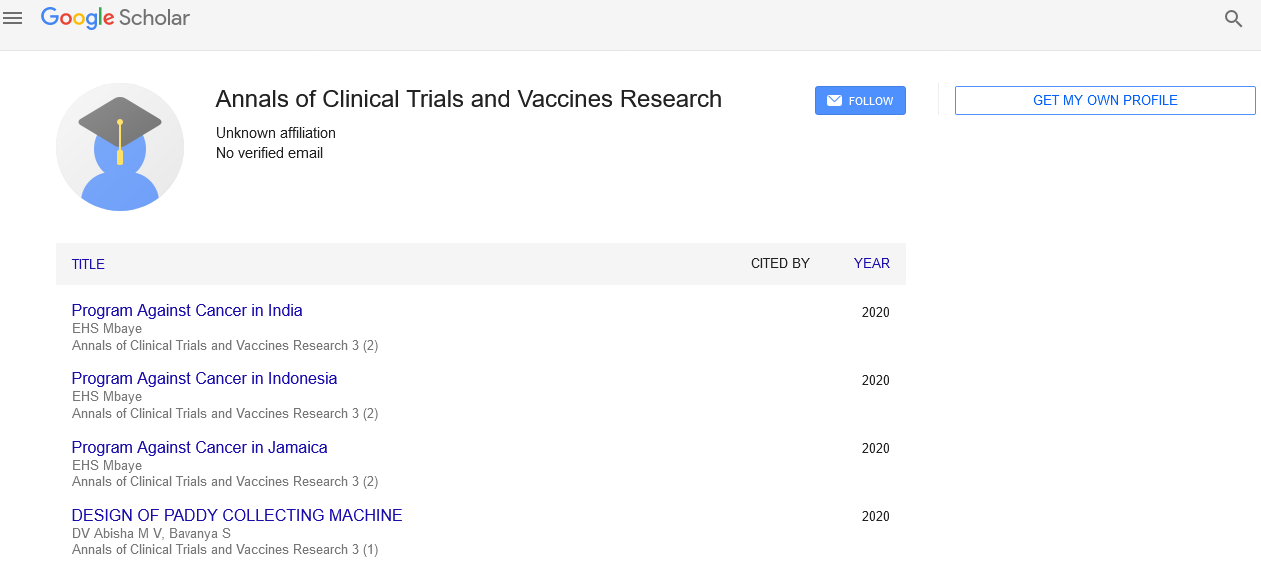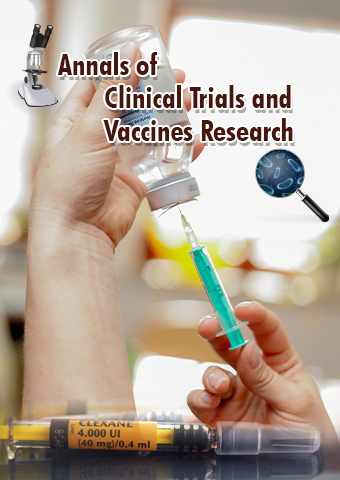Mini Review - Annals of Clinical Trials and Vaccines Research (2022) Volume 12, Issue 4
New Drugs for Cardiovascular and Cerebrovascular Diseases.
Deanna Saylor*
Department of Clinical Neurosciences and Preventive Medicine, Danube University Krems, Austria
Received: 01-Aug-2022, Manuscript No. ACTVR-22-71831; Editor assigned: 04-Aug-2022, PreQC No. ACTVR-22-71831 (PQ); Reviewed: 17- Aug-2022, QC No. ACTVR-22-71831; Revised: 22-Aug-2022, Manuscript No. ACTVR-22-71831 (R); Published: 29-Aug-2022; DOI: 10.37532/ actvr.2022.12(4).74-77
Abstract
The main causes of death worldwide are cardiovascular and cerebral disorders. Although the order of the death causes resulting from human diseases is predicted to alter dramatically by 2020, current epidemiological data indicate that coronary artery disease and cerebral haemorrhage will continue to be the leading and second causes of mortality in humans. Pharmacological treatment by traditional medicine has not yielded adequate outcomes despite various advancements in our understanding of the disorders. A promising candidate for the illnesses’ preventative treatment, according to recent studies, is natural goods and traditional herbal medicine. In order to provide strong evidence that supports the use of bioactive/traditional herbal medicine (THM) in the prevention and treatment of cardiovascular and cerebrovascular illnesses, we have encouraged researchers to submit a few research/review papers.
In the opening article of this special issue, it is examined how ginseng alters cardiac contractility by acting on PPARs, or peroxisome proliferator-activated receptors. It was proposed that higher PPAR expression in cardiac cells would allow ginseng to improve cardiac contractility. The second publication examines the function of musclin a novel skeletal muscle-derived factor identified in the mouse skeletal muscle cDNA signal sequence trap, and defines its direct impact on vascular contraction using an animal model of hypertension.
Keywords
plasma rante • cardio cerebral atherosclerosis burden • ischemic cerebrovascular disease • cervicocephalic artery • coronary artery • heart failure • hypercoagulability
Introduction
Heart failure, atherosclerosis, myocardial infarction, arrhythmia, hypertension, and stroke are the principal heart and brain illnesses associated with vasculopathy that are together referred to as cardiovascular and cerebrovascular diseases (CVDs). Despite advances in drugs and technology, people with CVDs continue to experience high rates of mortality and morbidity [1]. Contrary to cancer and communicable diseases, CVDs continue to remain the leading cause of death worldwide. For patients with CVDs, especially highrisk groups, precise risk assessment, stratification, and prognosis evaluation are crucial for cardiologists and neurologists. The majority of CVD diagnoses made today rely on clinical judgement, imaging symptoms, and a few biochemical indicators; nonetheless, the number of clinically useful indexes is very limited. Highly sensitive and specific diagnostic markers that are quick to become available, affordable, and non-invasive are ideal. The search for such a biomarker by doctors to aid in early detection, intervention, and therapy to prevent harmful cardiovascular and cerebrovascular events has been ongoing for years [2].
Red blood cell distribution width (RDW), measured by a typical full blood count, is one candidate (CBC). The coefficient of variation of the erythrocyte size is a measurement of the size variability of circulating erythrocytes. Red blood cells (RBCs) typically range in size from 80 to 100 fL in the blood. Clinical diseases include iron insufficiency, vitamin B12 and folate deficiency, accelerated RBC destruction, and blood transfusions are typical causes of consistently raised or decreased RBC levels. We provide a description of the physiological factors that contribute to changes in RDW values. Erythropoiesis changes can cause significant RBC size heterogeneity, which signals that some pathogenic changes are taking place in organisms. RDW is typically determined by dividing the mean corpuscular volume (MCV) standard deviation (SD) by MCV and multiplying by 100 to produce a percentage number to represent the RBC size heterogeneity [3]. There is currently no common reference range because different laboratories use different methodologies, instruments, experimenters, laboratory standards, and statistical approaches to measure RBC size. Most laboratories employed an RDW reference range between 11 and 15%. Display the RDW relative variation and the RBC volume normal distribution curve [4]. Thrombosis, stroke, myocardial infarction, coronary heart disease, and high blood pressure are just a few of the cardiovascular and cerebrovascular disorders (CCVD) that continue to be a threat to people’s health. Globally, 17.3 million individuals died from cardiovascular disorders in 2008, with 7.3 million of those fatalities attributed to coronary heart disease and 6.2 million to stroke. Finding workable prevention and treatment options is absolutely necessary and vital for maintaining human health given the high incidence and mortality of CCVD. Blood pressure-lowering drugs, such as diuretics, ACE inhibitors, or beta blockers, blood-thinning drugs (to reduce platelet aggregation), cholesterol-lowering drugs, and/or anti-arrhythmic drugs are all examples of conventional drug therapy. Despite the important therapeutic roles that these medications have played, the majority of them have unpleasant side effects, including flushing, exhaustion, shortness of breath, headaches, and dizziness from some antihypertensives and rhabdomyolysis and hepatic disorders from hypolipidemic agents [5].
Materials and Methods
Psoriatic patients receiving biological therapy at the Department of Dermatovenerology at Louis Pasteur University Hospital in Koice (UNLP) between 2009 and 2017 made up the study sample. Patients come from the Koice and Preov regions, or over one-third of Slovakia’s population, which is covered by the UNLP’s catchment area. The following criteria were used to determine who was eligible for inclusion: age over 18 years old, diagnosis of a moderate or severe type of psoriasis in patients who did not improve with conventional treatment. Patients had the option to revoke their consent to participate at any point during the trial because it was entirely voluntary. The ethical committee gave its approval to the trial, and each patient signed an informed permission form [6].
A network pharmacology database that integrates information on the ingredients of traditional Chinese medicine and the related target information is known as the Traditional Chinese Medicine Systems Pharmacology (TCMSP) database and analytic platform. The database includes important metrics for the oral bioavailability (OB), drug-likeness (DL), and blood-brain barrier permeability of components of traditional Chinese medicine that are absorbed, distributed, metabolised, and excreted (BBB). In this work, we collected all the components of ÜS using the TCMSP platform and searched the PubChem database to obtain the OB, DL, and BBB values of each component, with OB 30%, DL 0.18, and BBB -0.3 as the basis for candidate active ingredients [7].
Discussion
According to the above analysis, which focused on the metabolic features of cardiovascular and cerebrovascular diseases under various indicators, these features, which are based on convolutional neural networks, can accurately describe the unique circumstances of patients with cardiovascular and cerebrovascular diseases. Convolutional neural networks were used to analyse the pertinent data and indicators of cardiovascular and cerebrovascular diseases in order to obtain the model prediction curves of cardiovascular and cerebrovascular diseases at various times, in order to further analyse and predict the changing trend of cardiovascular and cerebrovascular diseases and improve medical care for patients [8]. It can be observed that the convolutional neural network-based cardiocerebrovascular indicators can accurately reflect the real cardio-cerebrovascular data and that there are overlapping indicators at different time points through the particular variations of the test curve and model curve. This demonstrates another feature of the model index selection’s precision [9]. Additionally, it is clear from the forecast that cardiovascular and cerebrovascular disorders exhibit a clear upward trend with passing years. The curve, however gradually declines after a certain point, suggesting that the characteristics of cardiovascular and cerebrovascular disorders alter differently with time. In order to conduct out focused evaluation and evaluation of cardiovascular and cerebrovascular disorders, we must take various actions depending on the current condition. The choice of the relevant characteristics for cardiovascular and cerebral disorders is ambiguous, and these factors will exhibit a complex process of change with the passage of time and the variation in sample sizes, resulting in a discrepancy between the predicted and observed results [10].
Conclusion
We draw the following conclusions based on the mechanisms mentioned in the preceding sections. Notably, ischemic CVD and depression are extremely common and are significant contributors to disability. These two disorders are linked; hence, stroke survivors are more likely to experience depression, and those who are depressed have a higher risk of both stroke and CHD than those who are not sad. Additionally, these two illnesses have some similar risk factors in common, including obesity, diabetes, and high blood pressure. Both disorders share the underlying mechanisms of numerous pathogenic processes, including inflammation, cell death (apoptosis and autophagy), the microbiome-gut-brain axis, and OS. OS is prominently at the hub of this web. These three risk factors are linked to OS and can cause OS to become overactive and reduce antioxidant activity, which can lead to the onset and progression of these diseases. Additionally, individuals with cardiovascular illnesses who also have OS have a higher risk of developing depression, whereas those who are depressed have a higher risk of developing cardiovascular disorders. Thirdly, elevated ROS levels encourage the development of ischemic CVD and depression through cell death signalling, inflammation caused by OS, and the microbiome-gut-brain axis. In conclusion, the shared risk factors promote the formation and progression of coupled ischemic CVD and depression by increasing the synthesis of OS and decreasing antioxidant defence. Antioxidants can be used to lessen OS-related illnesses and damage. Due to OS’s crucial function in these two diseases, its blockage may offer cuttingedge and promising therapeutic approaches for both disorders.
Acknowledgments
None
Conflicts of Interest
None
References
- Lozano R, Naghavi M, Foreman K et al. Global and regional mortality from 235 causes of death for 20 age groups in 1990 and 2010. The Lancet. 380, 2095-2128 (2013).
- Burt RK, Loh Y, Pearce W et al. Clinical applications of blood-derived and marrow-derived stem cells for nonmalignant diseases. The Journal of the American Medical Associatio. 299, 925-936 (2008).
- Burns TC, Verfaillie C, Low WC et al. Stem cells for ischemic brain injury. Journal of Comparative Neurology. 515,125-144 (2009).
- Savitz SI. Developing cellular therapies for stroke. Stroke. 46, 2026-2031 (2015).
- Benjamin EJ, Muntner P, Alonso A et al. Heart disease and stroke statistics-2019 update. Circulation. 139, 526- 528 (2019).
- Roth GA, Johnson CO. The burden of cardiovascular diseases among US states. JAMA Cardiology. 3,375-389 (2018).
- Attems J, Jellinger KA. The overlap between vascular disease and Alzheimer’s disease - lessons from pathology. BMC Medicine. 12, 206 (2014).
- Helzner EP, Luchsinger JA, Scarmeas N et al. Contribution of vascular risk factors to the progression in Alzheimer disease. Archives of Neurology. 66, 343-348 (2009).
- Liu X, Jin DY, McManus MT et al. Precursor microRNA-programmed silencing complex assembly pathways in mammals. Molecular Cell. 46, 507-517 (2012).
- Tsui NBY, Ng EKO, Lo YMD et al. Stability of endogenous and added RNA in blood specimens, serum, and plasma. Clinical Chemistry. 48, 1647-1653 (2002).
Google Scholar, Crossref, Indexed at
Google Scholar, Crossref, Indexed at
Google Scholar, Crossref, Indexed at
Google Scholar, Crossref, Indexed at
Google Scholar, Crossref, Indexed at
Google Scholar, Crossref, Indexed at
Google Scholar, Crossref, Indexed at
Google Scholar, Crossref, Indexed at
Google Scholar, Crossref , Indexed at

